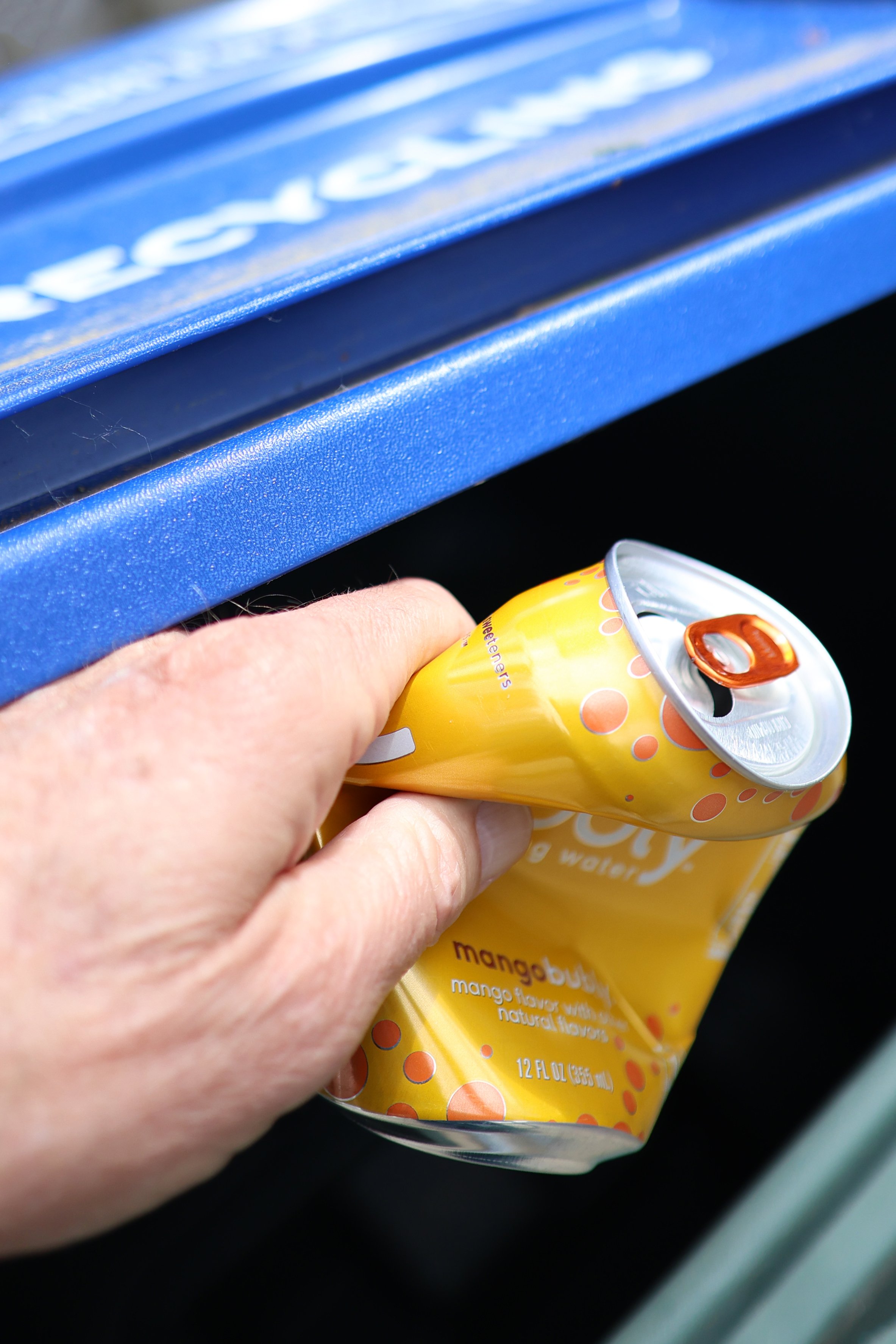Doing the Math on Recycling
By Mike Merchant
Do you remember the 2015 movie, “The Martian”? Matt Damon stars as an astronaut who is presumed dead and abandoned by his fellow astronaut team on Mars after a horrific wind storm. When the dust clears, Damon faces a daunting task: how to survive on leftover supplies for the four years until the next planned Mars mission.
Much of the movie is based on the ingenious math Damon must use to survive. For example, how much work can he do outside the station with 1500 hours of CO2 filters? How long can he survive on potatoes and MREs? For everything he relies on he must take the resource and divide it by the number of days he needs to survive and ask whether he can make it work.
Of course, things are rarely that simple or easy to calculate.
Recycling by the Numbers
Take recycling. You would think that recycling is a no-brainer, a guaranteed plus for the environment. Each of us in the U.S. generates about 4.9 pounds of trash daily. In 2018 this amounted to 292.4 million tons of municipal solid waste (MSW) a year. This is a waste of valuable natural resources and contributes to CO2 and other pollutants such as methane. Even with more and more cities recycling waste, only 69 million tons of waste were recycled in 2018 and only 25 million tons were composted, according to the EPA.
Indeed, some today argue that recycling is a mere feel-good activity that does little to reduce waste. Plastics are especially bad as they degrade with every re-use, and only a few types of plastic have economic value when recycled. Even more infuriating for people who want to recycle, those little recycling triangles on plastic bottles and packaging are no guarantee that the plastic is even recyclable.
But plastic’s bad rep doesn’t mean that all recycling is a sham. For example, paper and paperboard make up the largest share (23%) of solid waste generated in the U.S. Studies show that overall paper recycling helps reduce greenhouse gases and water use. Sixty-six percent of all recycled materials are paper.
Glass recycling reduces waste going to landfills and reduces the amount of energy needed to produce new glass. One ton of recycled glass saves 2 cubic yards of landfill space—significant when you realize that about 5% of landfill space is taken up with discarded glass.
While energy savings from glass recycling are modest (10-15%), energy savings from aluminum recycling are as high as 95%. Unlike plastic, aluminum is completely recyclable and can be melted down and reused indefinitely. In addition, recycled aluminum produces only 3% of the greenhouse gases that are produced when new aluminum is made.
Recycling electronic waste is another big plus for the environment. Common examples of e-waste include old electronics, batteries, cell phones, and computers. Worldwide, for example, only about one percent of cell phones are recycled. About 25% of a cell phone is metal, including copper, silver, gold, palladium, and platinum, and while prices fluctuated in 2004 the average cell phone contained approximately $.63 of these precious metals. Multiplied by the 5.3 billion phones discarded yearly (2020 estimate), the economics of recycling e-waste begin to make sense.
Believe it or not, your clothes are also major contributors to waste and landfills. According to National Geographic, between 2000 and 2014 worldwide consumers bought 60% more clothes and wore them half as long before discarding them. Worldwide, the fashion industry produces 100 billion garments a year, of which 87% (40 million tons) end up in landfills. And only 1% of all discarded clothing is recycled.
In the United States, at least 200 million pairs of shoes and sneakers end up in landfills each year. Since many clothes and shoes are manufactured with materials that are not biodegradable, they remain in landfills or are incinerated, which leads to toxic chemicals in our air and soil. Doing the math, the fashion sector was responsible for some 2.1 billion metric tons of greenhouse gas (GHG) emissions in 2018, about 4 percent of the global total.
Strategic Recycling
So how do we respond? First, realize that (except for some plastics right now) recycling makes sense. We live in a resource-limited world, and it makes good climate and energy sense to recycle our products. The sooner we close the loop the better for planet Earth. Here are a few suggestions to recycle more strategically:
Recycling is only part of the eco-principle of REDUCE, REUSE, and RECYCLE. The number one best thing we can do is to reduce the amount of packaging and single-use recyclables we buy. Reuse clothing by donating to thrift shops or giving away on sites like Buynothing Project or your local Facebook Buy Nothing group. Avoid single-use disposables like plastic bags or straws when you can and reuse stuff more.
Plastics are the least recycled products going to landfills and are increasingly being found in oceans in the form of microplastics. Buying fewer plastic products and products with less plastic packaging is a good start. Use reusable shopping and produce bags when you shop, clean food off your recyclables, and be careful to follow your community waste services guidelines for the kinds of plastics they accept.
Recycle your aluminum! No other resource is more easily recycled or has as big an impact on energy and the climate as aluminum.
Reduce your need for paper and recycle what you use. Save sensitive documents for secure paper shredding events like BCC’s recycling drop-off event.
Save up old batteries and set aside a box for old electronics to recycle.
I admit that weaning ourselves off a disposable economy is not easy. Our household is getting there… slowly. Even more encouraging is when as a church we can encourage one another to recycle as part of our biblical commission of stewardship (Genesis 2:15).
This was evident last month with our church’s recycling drive. Focusing strategically on hard-to-recycle items, we collected 120 pairs of athletic shoes for reuse or recycling, shredded and recycled 2,500 lbs of paper, and collected 190 lbs. of batteries and 4,356 lbs. of e-waste for recycling. It was a modest but, in our minds, successful first step to helping our community recycle hard-to-recycle items. Thanks to all of you who participated.
Recycling alone won’t save the world, but it’s still an important component of energy conservation and greenhouse gas reduction. Do the math. I’m sure Matt Damon would agree.

